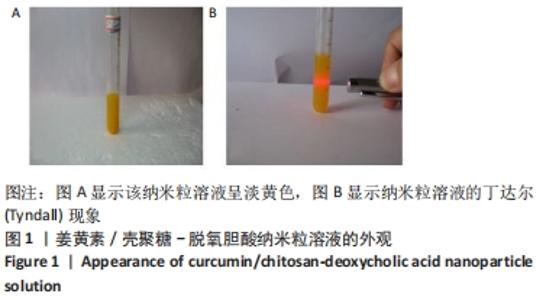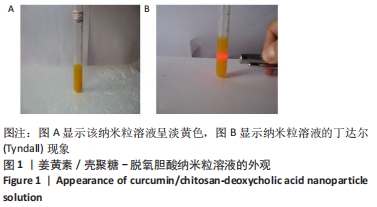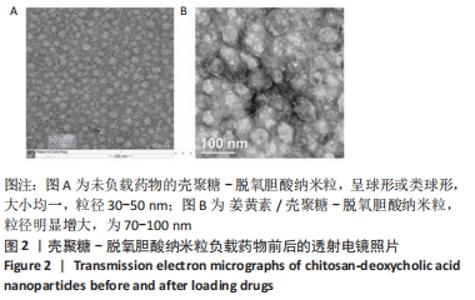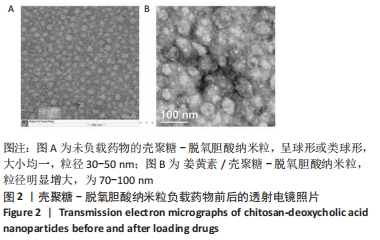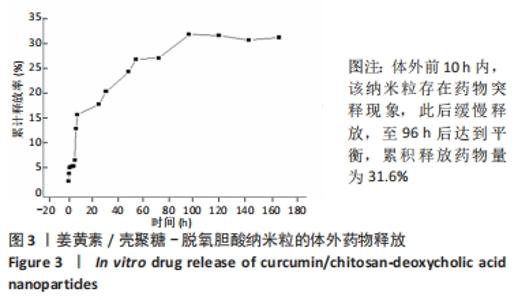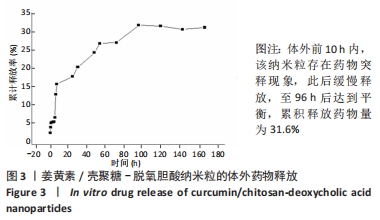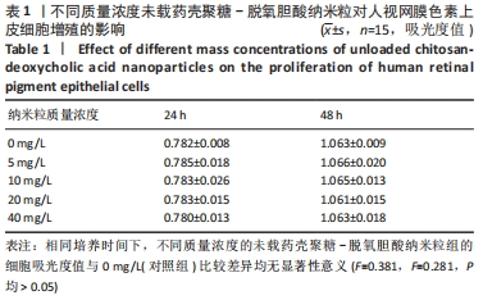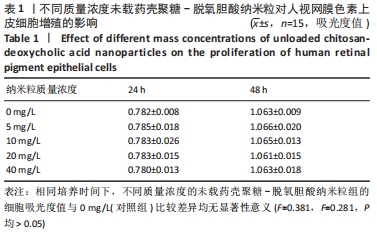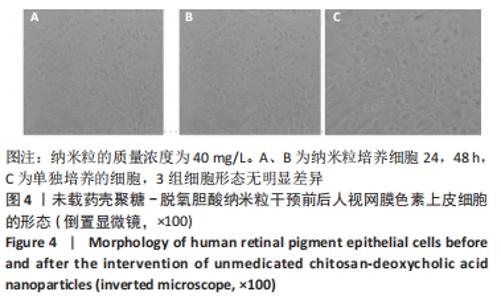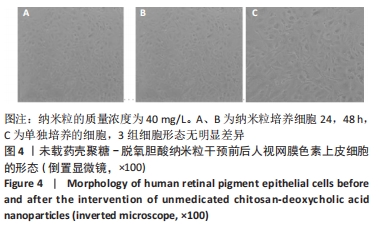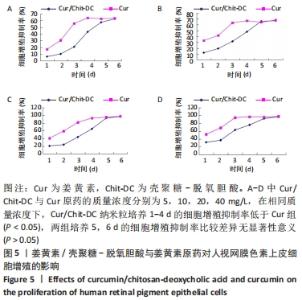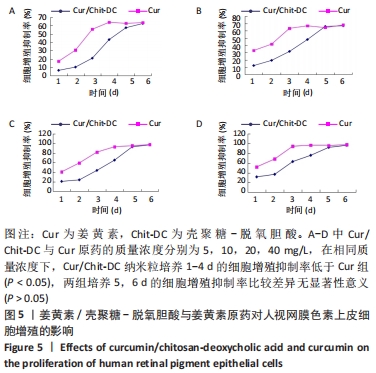[1] CORRIE L, GULATI M, VISHWAS S. Combination therapy of curcumin and fecal microbiota transplant: Potential treatment of polycystic ovarian syndrome. Med Hypotheses. 2021;154:110644.
[2] 吴伟,操儒森,韩琳.姜黄素保护糖尿病鼠肾脏的系统评价[J].环球中医药,2021,14(8):1540-1545.
[3] MRUDULA T, SURYANARAYANA P, SRINIVAS PN, et al. Effect of curcumin on hyperglycemia-induced vascular endothelial growth factor expression in streptozotocin-induced diabetic rat retina. Biochem Biophys Res Commun. 2007;361(2):528-532.
[4] 高彩芳,夏加璇,朱颖.纳米技术在改善中药有效成分成药性中的应用[J].中草药,2018,49(12):2754-2762.
[5] LI M, XIN M, GUO C. New nanomicelle curcumin formulation for ocular delivery: improved stability, solubility, and ocular anti-inflammatory treatment. Drug Dev Ind Pharm. 2017;43(11):1846-1857.
[6] AMALIA ES, YOLANDA D, MARGARITA C, et al. Chitosan nanoparticles as a potential drug delivery system for the ocular surface toxicity, uptake mechanism and in vivo tolerance. Invest Ophth Vis Sci. 2006;47(4): 1416-1425.
[7] 周怀胜,蓝育青,程良正,等.两亲性壳聚糖衍生物负载及缓释醋酸曲安奈德药物的性能[J].中国组织工程研究与临床康复,2010, 14(29):5371-5374.
[8] LIU J, XU L, LIU C, et al. Preparation and characterization of cationic curcumin nanoparticles for improvement of cellular uptake. Carbohydr Polym. 2012;90(1):16-22.
[9] KHAR A, ALI AM, PARDHASARADHI BV, et al. Induction of stress response renders human tumor cell lines resistant to curcumin-mediated apoptosis : role of reactive oxygen intermediates. Cell Stress Chaperones. 2001;6(4):368-376.
[10] SHABGAH AG, ZARIFI SH, KIAPEY SSM, et al. Curcumin and cancer; are long non-coding RNAs missing link? Prog Biophys Mol Biol. 2021; 164:63-71.
[11] 袁银花,光琦,张珊珊,等.兼有线粒体靶向、溶酶体逃逸功能的姜黄素TPP-PEG-PE纳米胶束的制备及促乳腺癌细胞凋亡的研究[J].中国中药杂志,2020,45(22):5495-5503.
[12] PAN L, SHA J, LIN W, et al. Curcumin inhibits prostate cancer progression by regulating the miR-30a-5p/PCLAF axis. Exp Ther Med. 2021;22(3):969.
[13] SONG W, REN Y, LIU L, et al. Curcumin induced the cell death of immortalized human keratinocytes (HaCaT) through caspase-independent and caspase-dependent pathways. Food Funct. 2021;12(18):8669-8680.
[14] 边芳,张明昌.姜黄素抑制人血管内皮细胞增殖的研究[J].临床眼科杂志,2006,14(6):561-564.
[15] ARBISER JL, KLAUBER N, ROHAN R, et al. Curcumin is an in vivo inhibitor of angiogenesis. Mol Med. 1998;4(6):376-383.
[16] 龚凌,姜德咏,朱晓华,等.姜黄素对培养的人胚胎视网膜色素上皮细胞增殖活性的影响[J].眼科学报,2004,20(4):246-248.
[17] 梅兴国.微载体药物递送系统[M].武汉:华中科技大学出版社, 2009:395-396.
[18] 李松霖,谭群友,王如文,等.新型姜黄素纳米粒对Lewis肺癌细胞增殖、凋亡的影响[J].第三军医大学学报,2015,37(2):141-145.
[19] 黄开红,刘建化,王凌云,等.载5-FU免疫纳米微粒的体外释药及其抗癌效应研究[J].中国肿瘤临床,2007,34(11):601-603.
|
